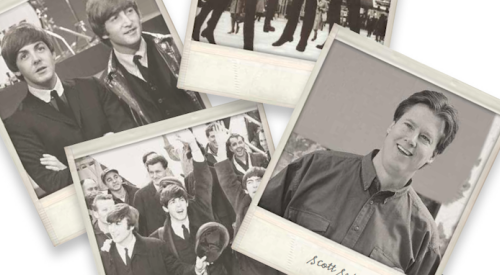| Ron Jones |
It was one of those chance occurrences when two people who know each other happen to come together at the same place.
I was driving along a residential lane, and as I turned a corner I noticed another builder I hadn’t seen in a long time. So I pulled over and waited for him to drive up behind my truck. We exchanged pleasantries, but the conversation took a serious turn as he said he had decided to leave the local builders association and get out of the business to concentrate on other things.
This guy is a very good builder and a quality person. But he explained to me that he had simply had about all he could take of the negative side of the industry — the lack of quality, the broken promises, the absence of integrity in the way people treat each other— and he never heard anything related to craftsmanship or creativity whenever he went to a “builders” meeting. Instead, he heard about sales figures and profits, and how many entries were in the latest home show.
As we parted he said it made him sad that guys like us are a disappearing breed and that it seems no one is coming up with whom to share our experience and values. It saddened me, too, and as he drove away I watched with a sense of loss and uncertainty about what the future of building is all about.
Many years ago, as a boy of 12, I put on a nail apron and started a summer job as a carpenter’s helper. I was put under the supervision of two old master carpenters, Tony and Herschel.
Tony, an Italian-American, and Herschel, a German-American, were old-school. They were fine craftsmen who took tremendous pride in their work and believed that if something was worth doing, it was worth doing well, as well as possible. They decided that my “education” was important, so they were determined to make what they called “decent help” out of me.
They pooled some tools out of their spares and came up with the followings: a wooden-handled rip hammer; a framing square and a bevel gauge; an old crosscut hand saw; a plumb bob and a small level; a chalk box and a folding carpenter’s rule; some mismatched wood chisels; a hand-cranked grinding wheel for sharpening; a brace and bit with a few augers; a wood rasp and a block plane; and an old, wooden toolbox to carry everything.
At the beginning, Tony and Herschel showed me mostly how to use the tools as they were needed and how to take care of maintenance, such as sharpening. They taught me how to “read” a framing square and how to determine the relationships between pitches and angles, and how to figure rakes and rafter lengths and so on. They also made sure I did my share of stacking, carrying materials and sweeping up. They gave me a lot of good-natured ribbing and kept me focused when my mind wandered in the way of a 12-year-old.
From time to time, Tony and Hershel would patiently show me how to get it right if I made a bad cut or botched a job of blind nailing. But if my attention wandered too much, they had little tolerance for my carelessness and would send me off on some gopher job just to get me out of their hair, and without ever saying so, they would always somehow let me know what was happening. I would feel ashamed and want to try harder.
A lot of time has passed since I worked for Tony and Hershel, and I don’t remember thanking them properly for all they shared with me. But in the interim, as I continued to wear a nail apron, carried textbooks and, for a time, wore a military uniform, I have used the simple lessons they taught me: how all parts of the job are important, how all the resources we use have value and how every person’s efforts should be respected.
If you’re like me, much of the work you do is still in learning and maintaining the tools. Some of it is routine; once in a while there is some really special task that everyone revels in, and I suppose those are the moments that keep us all coming back for more.
We still have a chance every day to look at the job we’ve done and honestly answer for ourselves how well we’ve done it. It still takes a lot of work just to keep the hammers swinging and the sawdust flying. Plus, we realize that not everyone sees the same vision of the American Dream that a builder sees.
For me, the best part of the job is that I get to judge whether I’ve built something of quality, with integrity and respect, and every so often I even feel like I’ve been “decent help” that day. When that happens, I just silently thank Tony and Herschel.











